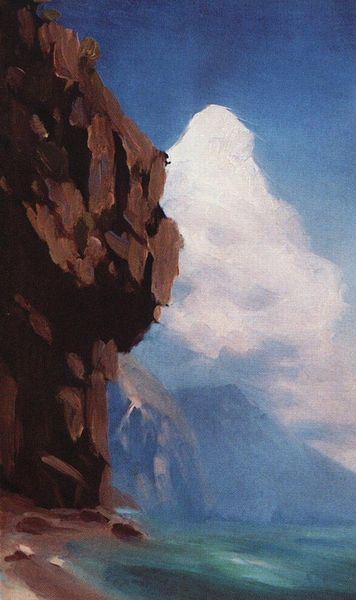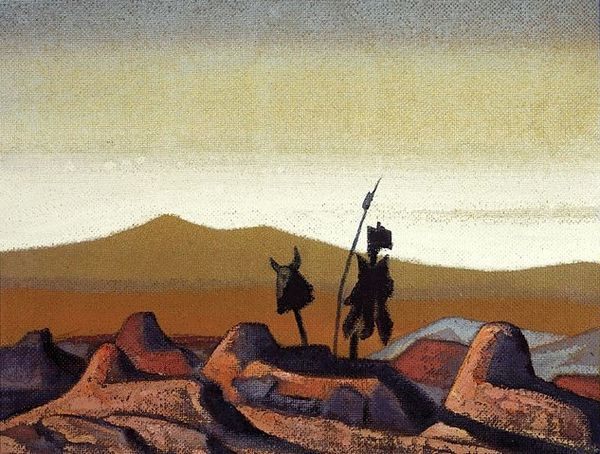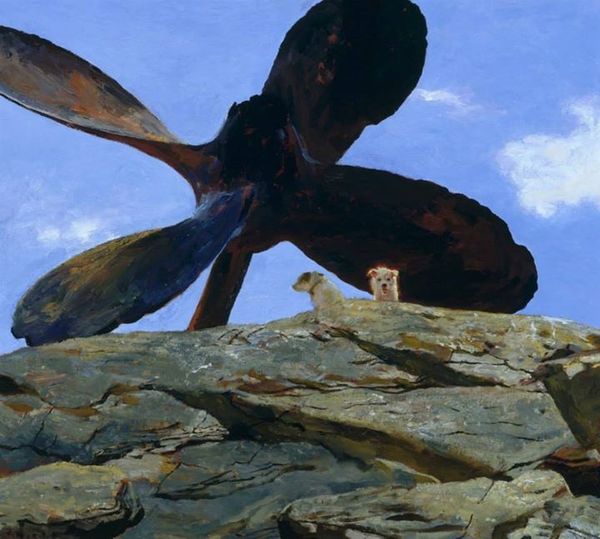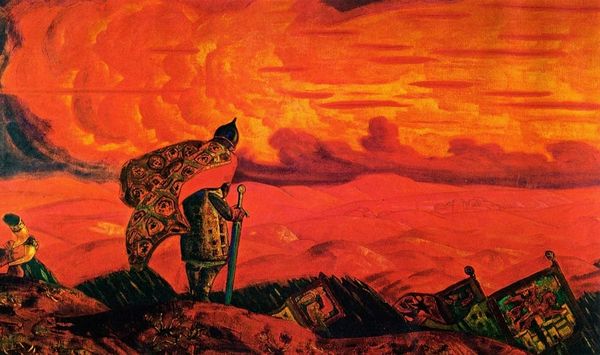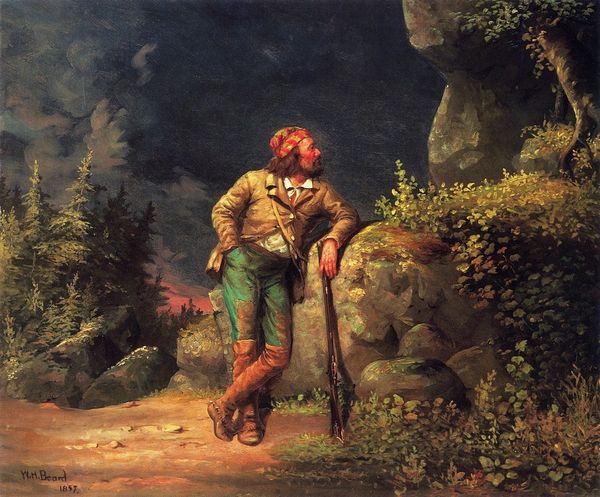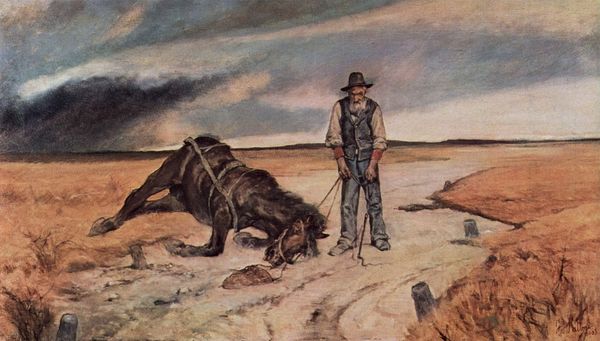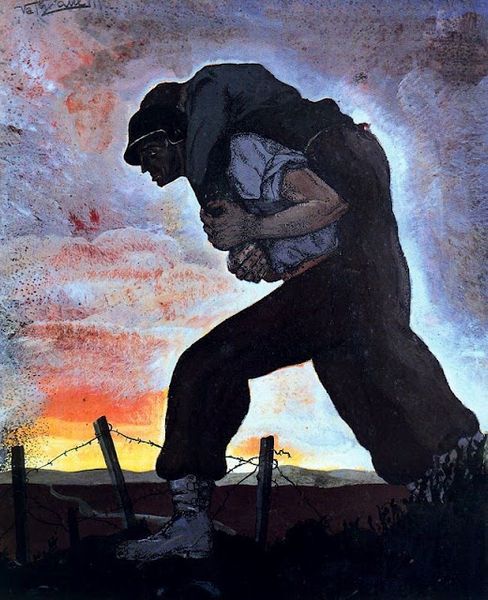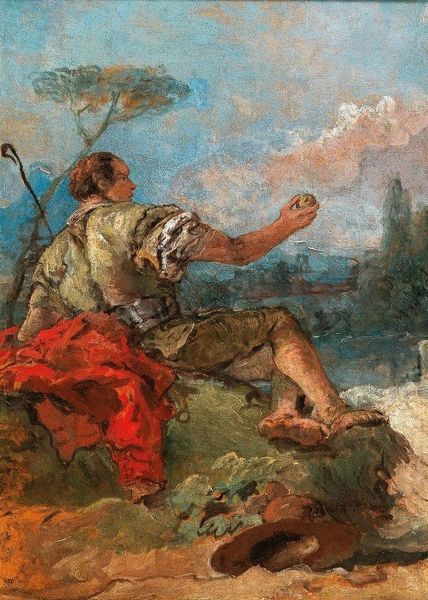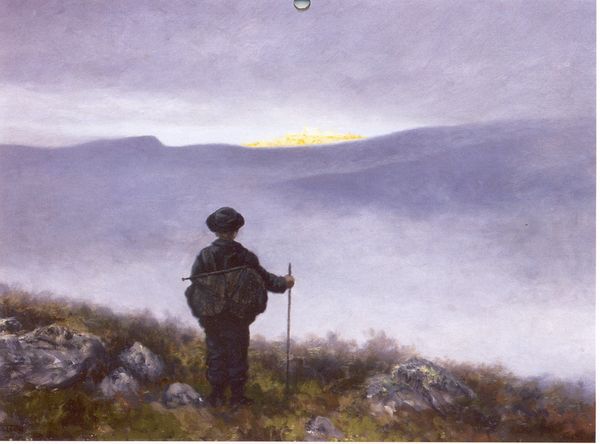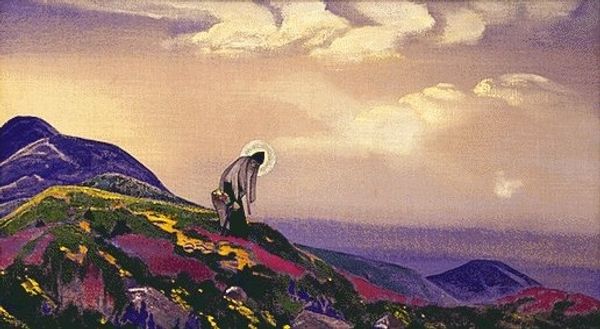
Copyright: Public domain
Curator: Winslow Homer's "The Woodcutter," created in 1891, depicts a lone figure standing on a precipice overlooking a vast landscape. The work is watercolor on paper, capturing a dramatic sky and the rugged terrain. Editor: Immediately, the somber mood strikes me. The palette is muted, almost monochromatic, save for the figure's reddened arms. The weight of the impending storm and the solitary figure create a sense of isolation, of man against nature's grand, potentially hostile, stage. Curator: Homer's choice to portray the woodcutter from behind invites us to contemplate themes of labor and human endeavor. His back is strong, solid; the axe rests heavily but securely in his grip. Symbolically, the woodcutter represents both dominion over and a deep connection with nature. The ax is not just a tool but also a phallic symbol. Editor: That's interesting, particularly considering Homer’s use of watercolor. There is the sense of spontaneity here, even a fluidity, at odds with the permanence and solid form that a woodcutter produces by felling trees. The red sleeves feel particularly loaded as an image. Are these, perhaps, a symbol for raw animalistic instinct? Curator: Precisely, the sleeves invoke feelings and connections to labor and perhaps passion. Moreover, the vast, stormy sky serves to highlight the precariousness of human existence against the backdrop of the natural world. The clouds bear down—it almost feels biblically portentous! Homer has tapped into a deep well of collective anxiety. Editor: I’m wondering, though, about Homer's own engagement with this labor. Was this direct experience translated into art, or a more detached, romantic observation? The scale almost mythologizes the figure, imbuing the woodcutter with an archetypal presence rather than depicting the reality of exhausting, often unacknowledged, labor. Curator: I see what you mean; it resonates with Romantic landscape painting and sublime art. While grounded in realism, this figure feels elevated to an emblem of rugged independence, perhaps tapping into American mythologies of self-reliance. Editor: So, beyond just pictorial mastery and its romantic elements, there are so many things happening material in Homer’s "Woodcutter" that it warrants continued reflection on class, work, and labor in late 19th century American society. Curator: Ultimately, Winslow Homer’s art evokes so many of those underlying narratives that still permeate our thinking.
Comments
No comments
Be the first to comment and join the conversation on the ultimate creative platform.

